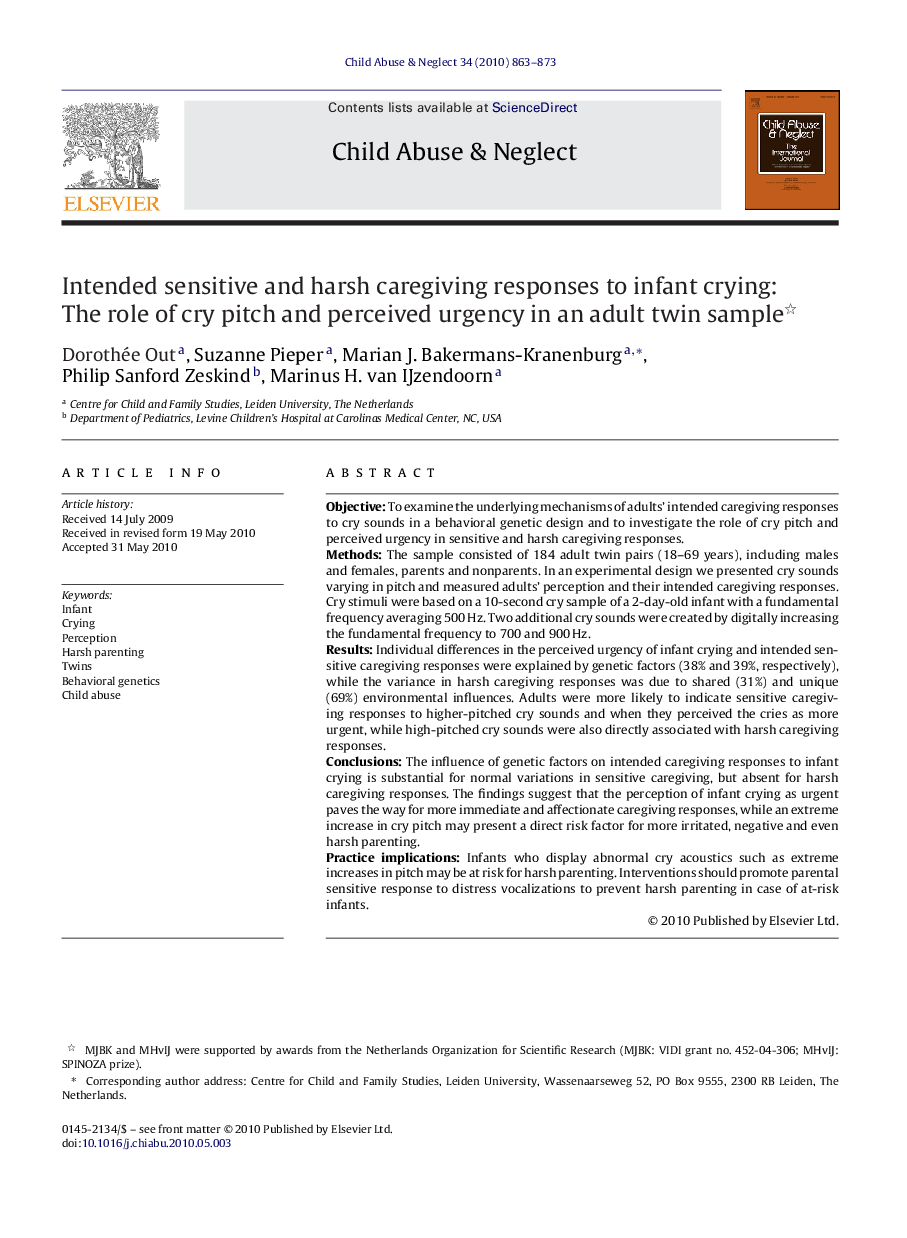| کد مقاله | کد نشریه | سال انتشار | مقاله انگلیسی | نسخه تمام متن |
|---|---|---|---|---|
| 345456 | 617519 | 2010 | 11 صفحه PDF | دانلود رایگان |

ObjectiveTo examine the underlying mechanisms of adults’ intended caregiving responses to cry sounds in a behavioral genetic design and to investigate the role of cry pitch and perceived urgency in sensitive and harsh caregiving responses.MethodsThe sample consisted of 184 adult twin pairs (18–69 years), including males and females, parents and nonparents. In an experimental design we presented cry sounds varying in pitch and measured adults’ perception and their intended caregiving responses. Cry stimuli were based on a 10-second cry sample of a 2-day-old infant with a fundamental frequency averaging 500 Hz. Two additional cry sounds were created by digitally increasing the fundamental frequency to 700 and 900 Hz.ResultsIndividual differences in the perceived urgency of infant crying and intended sensitive caregiving responses were explained by genetic factors (38% and 39%, respectively), while the variance in harsh caregiving responses was due to shared (31%) and unique (69%) environmental influences. Adults were more likely to indicate sensitive caregiving responses to higher-pitched cry sounds and when they perceived the cries as more urgent, while high-pitched cry sounds were also directly associated with harsh caregiving responses.ConclusionsThe influence of genetic factors on intended caregiving responses to infant crying is substantial for normal variations in sensitive caregiving, but absent for harsh caregiving responses. The findings suggest that the perception of infant crying as urgent paves the way for more immediate and affectionate caregiving responses, while an extreme increase in cry pitch may present a direct risk factor for more irritated, negative and even harsh parenting.Practice implicationsInfants who display abnormal cry acoustics such as extreme increases in pitch may be at risk for harsh parenting. Interventions should promote parental sensitive response to distress vocalizations to prevent harsh parenting in case of at-risk infants.
Journal: Child Abuse & Neglect - Volume 34, Issue 11, November 2010, Pages 863–873